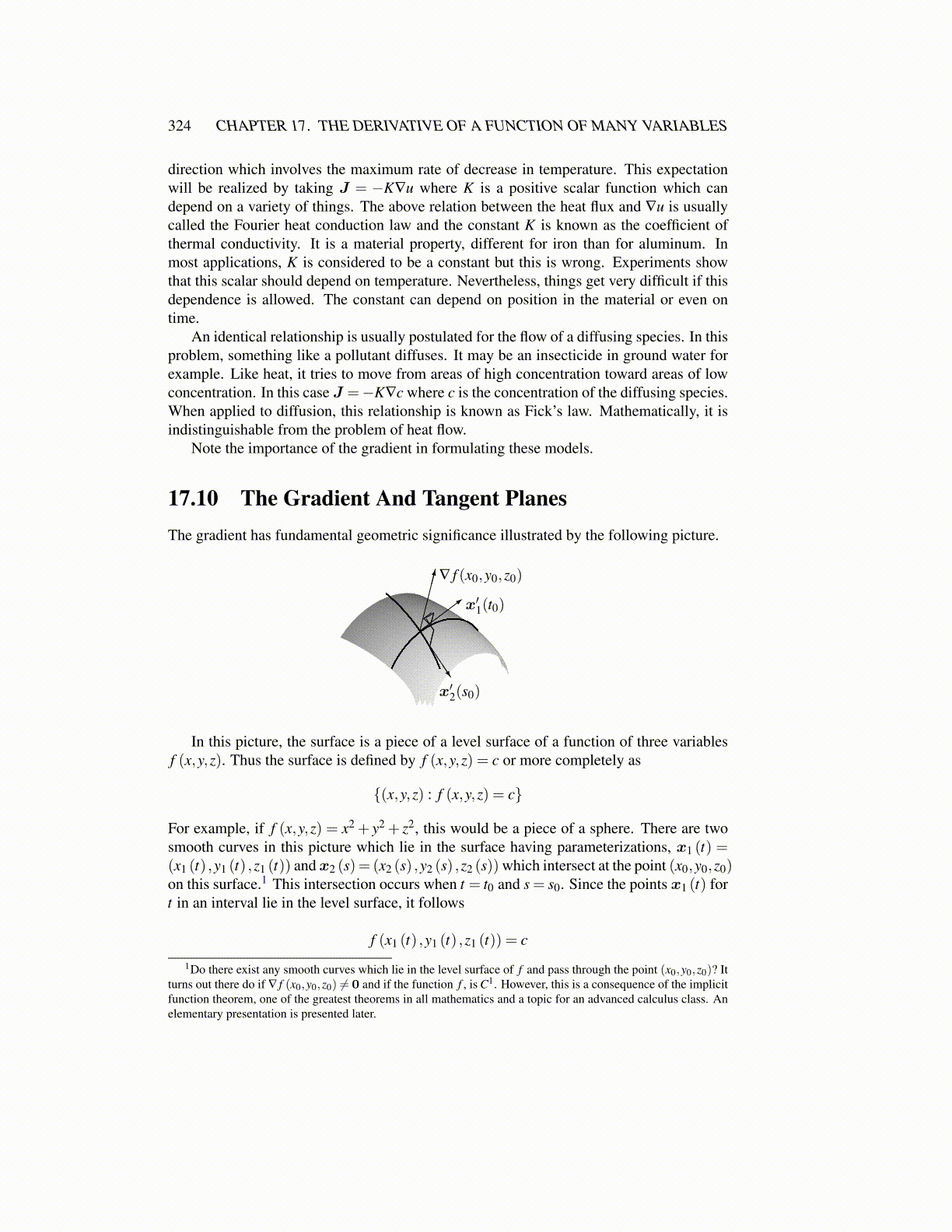
324 CHAPTER 17. THE DERIVATIVE OF A FUNCTION OF MANY VARIABLES
direction which involves the maximum rate of decrease in temperature. This expectationwill be realized by taking J = −K∇u where K is a positive scalar function which candepend on a variety of things. The above relation between the heat flux and ∇u is usuallycalled the Fourier heat conduction law and the constant K is known as the coefficient ofthermal conductivity. It is a material property, different for iron than for aluminum. Inmost applications, K is considered to be a constant but this is wrong. Experiments showthat this scalar should depend on temperature. Nevertheless, things get very difficult if thisdependence is allowed. The constant can depend on position in the material or even ontime.
An identical relationship is usually postulated for the flow of a diffusing species. In thisproblem, something like a pollutant diffuses. It may be an insecticide in ground water forexample. Like heat, it tries to move from areas of high concentration toward areas of lowconcentration. In this case J =−K∇c where c is the concentration of the diffusing species.When applied to diffusion, this relationship is known as Fick’s law. Mathematically, it isindistinguishable from the problem of heat flow.
Note the importance of the gradient in formulating these models.
17.10 The Gradient And Tangent PlanesThe gradient has fundamental geometric significance illustrated by the following picture.
∇ f (x0,y0,z0)
x′1(t0)
x′2(s0)
In this picture, the surface is a piece of a level surface of a function of three variablesf (x,y,z). Thus the surface is defined by f (x,y,z) = c or more completely as
{(x,y,z) : f (x,y,z) = c}
For example, if f (x,y,z) = x2 + y2 + z2, this would be a piece of a sphere. There are twosmooth curves in this picture which lie in the surface having parameterizations, x1 (t) =(x1 (t) ,y1 (t) ,z1 (t)) and x2 (s)= (x2 (s) ,y2 (s) ,z2 (s)) which intersect at the point (x0,y0,z0)on this surface.1 This intersection occurs when t = t0 and s = s0. Since the points x1 (t) fort in an interval lie in the level surface, it follows
f (x1 (t) ,y1 (t) ,z1 (t)) = c
1Do there exist any smooth curves which lie in the level surface of f and pass through the point (x0,y0,z0)? Itturns out there do if ∇ f (x0,y0,z0) ̸= 0 and if the function f , is C1. However, this is a consequence of the implicitfunction theorem, one of the greatest theorems in all mathematics and a topic for an advanced calculus class. Anelementary presentation is presented later.